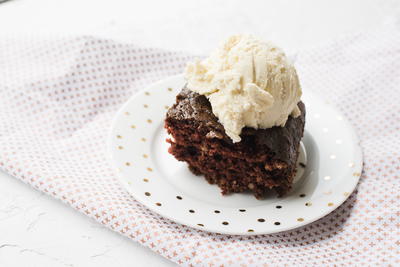Brine Cure for Bacon & Hams
Ingredients
- 8 pounds salt
- 2 pounds sugar
- 2 ounces saltpeter
- 5 gallons water, boiled and cooled
Instructions
Yield: 100 Lbs meat. Mix the pickling ingredients. In theory thicker joints, such as ham, should have a stronger brine - make the brine up in 90% of the quantity of water. Thinner joints, such as bacon and bath chaps, which are the jowls of the pig, should have the mixture in 120% of the water. Put the meat into the brine, making sure that there are no air pockets, put a scrubbed board on top and a big stone on top of that to weight the meat down - DON'T use an iron weight - and leave in the brine for 4 days per pound of each big joint. Thus each joint should be weighed before being put in, and each removed at its appointed date. Bacon and small joints should only be left in for two days per pound. After 4 or 5 days, turn the joints round in the brine, and after every so often. If, in hot weather, the brine becomes ropey (viscous when you put your hand in), remove meat, scrub in clean water and put it into fresh brine. When the meat is taken out of the brine, wash it in fresh water, hang it up for a week in a cool dry place to dry, then, if you want, smoke it. It can be eaten "green" ie not smoked at all. It should keep indefinitely, but use small joints and bacon sides before hams. Hams improve with maturing. Bacon is best eaten within a few months. Cured hams and shoulders should be carefully wrapped in greaseproof paper and then sewn up in muslin bags and hung in a fairly cool dry place, preferably at a constant temperature. If you paint the outside of the muslin bag with a thick paste of lime and water, so much the better. Like this they will keep for a year or two and improve all the time in flavour until they are delectable. Light turns bacon rancid, so keep it in the dark. Keep flies off all cured meat.
Read NextBuckwheat Sausage Recipe





